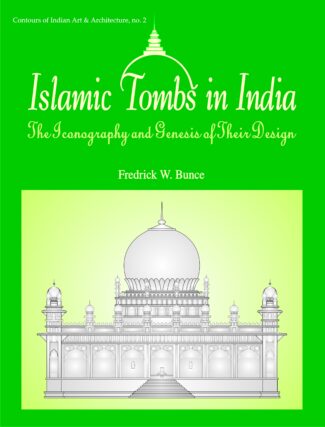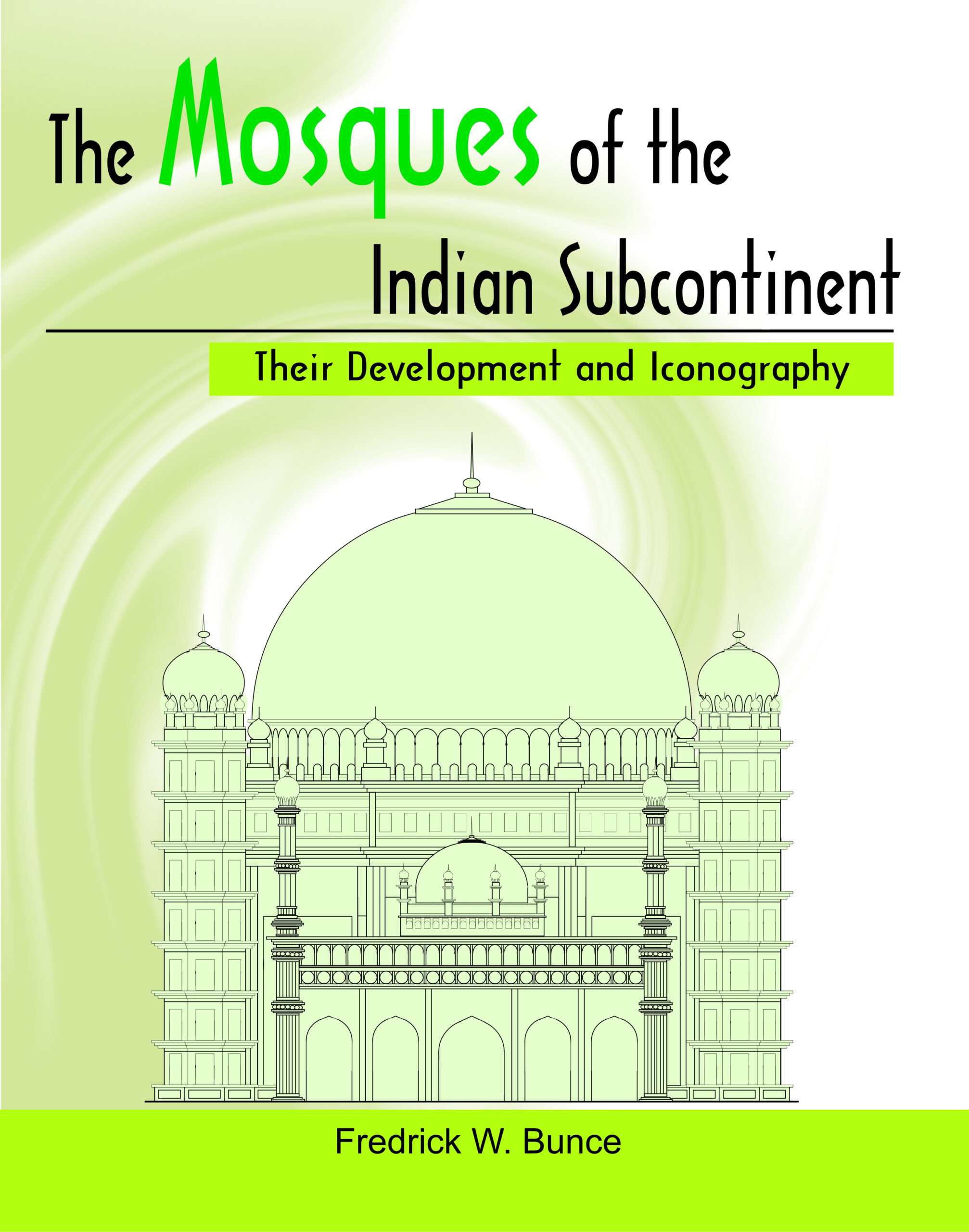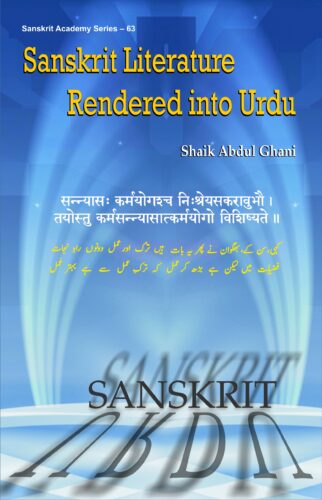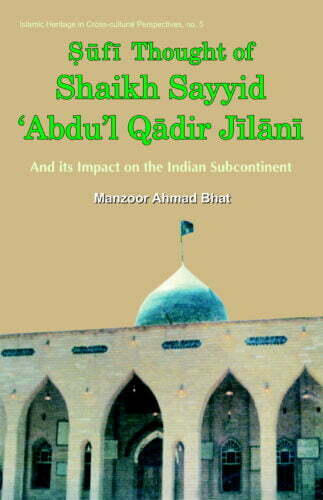Showing 11–19 of 19 results

The book studies the architecture and iconography of some 36 Islamic tombs belonging to the period ad 1230 to 1754. Abounding in line drawings, it makes examines the monuments size, plan and elevation, the techniques of their construction, masonry and artisanship, and the relevance of each monument in the overall scheme of Indo-Islamic architectural development.
The work by an Indological scholar who has studied different architectural traditions of the world covers the architecture and iconography of some 36 Islamic tombs in India spanning a period of over 500 years from c. ad 1230 to 1754. It begins with a brief historical background to the Islamic rule in northern India and a discussion on burial practices and tomb types of the time to further understanding of the underlying concept of construction and functions of the tombs. Abounding in numerous line drawings of plans and elevations, and figures, it examines the influence of different traditions Buddhist and Hindu as well as other Asian and African and Mediterranean traditions on evolution of the form of Islamic tombs. It makes a detailed examination of the Indo-Islamic tombs under consideration: their description, size, plan and elevation including the interior space and application of the mandala patterns over the tomb structures, the techniques of construction, masonry and artisanship employed in them. It explains the place and relevance of each monument in the overall scheme of Indo-Islamic architectural development and growth as well as the importance of each by itself. It delves into the religious, philosophical and mathematical bases of the architecture and its application to tomb-building. The research also involves a comparative study of Indo-Islamic tombs vis-a-vis other architectural marvels of the world Islamic and non-Islamic. The book will be extremely relevant to scholars and students of Indian, particularly Indo-Islamic, iconography and those interested in Indo-Islamic cultural traditions in general.

The book endeavours in recounting the mode in which Mohammed accomplished a tedious task of constructing a state and an empire out of the Arab tribes. It attempts to do justice to his intellectual ability and to observe towards him the respectful attitude which his greatness deserves. The volume is neither an apology nor an indictment.
The standpoint from which this book is written suggests and regards Mohammed as a great man, who solved a political problem of appalling difficulty – the construction of a state and an empire out of the Arab tribes. The book endeavours in recounting the mode in which Mohammed accomplished this, to do justice to his intellectual ability and to observe towards him the respectful attitude which his greatness deserves. The volume is neither an apology nor an indictment.
As far as the fecundity of the content is concerned, the book has taken a cue from different Arab sources and many scholarly works of earlier historians, efforts of many European scholars on Mohammedan antiquities and Islamic traditions. In condemning traditions unhistorical, the book has ordinarily considered the obelus of scholars like Ignaz Goldziher, Thodor Noldeke and Julius Wellhausen sufficient.

The Indian subcontinent is home to some spectacular mosques which are architectural marvels produced by the spread of Islam in India. 54 important mosques including their locations, history, structure and plan patterns, are covered in this volume which will be indispensable for scholars and students of Indo-Islamic architecture.
The spread of Islam in India produced some of the most spectacular monuments, the mosques stand as testimony to the great architectural skill and expertise of the Indian subcontinent through centuries and constitute one of the most important aspects of the rich architectural culture of the region. This volume showcases some 54 important mosques spread across the Indian subcontinent from Lahore in modern Pakistan to Gaur in modern West Bengal and from Delhi in the north to Kayalpatnam and Bijapur in South India. It mentions the location of the mosques, their history, structure and plan patterns and discusses various elements of the structures in detail: their entrances, pillars, porticoes, type of mihrab and other aspects. It emphasises the importance of a particular masjid such as its typifying the mosques of a certain period or dynasty and setting the standard for later masjids in some manner. It presents some other plans and proportional elevations in the appendices for a comparative study. An extremely useful list of Muslim rulers of the Indian subcontinent is provided. With maps and drawings of plans of mosques, the book is a painstaking effort to examine the evolution and iconography of the mosque architecture in the region. The volume will be indispensable for scholars and students of Indo-Islamic architecture.

The book studies INLAY art that developed in Mughal Architecture indigenously, from Humayun to Shah Jehan (c. 1535 to 1658 ad). Mughal inlay is architectural and to brand it pietra-dura, which was a florentine picture-art used on wooden furniture, is a misnomer. This book also reveals that Orpheus Plaques which led the colonial historians to Florence to trace the origin of Mughal inlay were imported ready-made and there is no other example of Florentine pietra-dura.
The book studies INLAY art as it developed in Mughal Architecture indigenously, from Humayun to Shah Jehan (c. 1535 to 1658 ad), landmark examples of which have been illustrated. Mughal inlay is architectural, and it is a misnomer to brand it: pietra-dura which was a florentine picture-art used on wooden furniture. Orpheus Plaques which led the colonial historians to trace origin of Mughal inlay to Florence, were imported ready-made and there is no other example of Florentine pietra-dura. Inlay is the most distinctive characteristic of Mughal Architecture and study of its growth and development, to the elegance of the Taj dados, the chef doeu-vre of Indian art, is historically as enlightening, as interesting it is artistically.

The book studies the outstanding features of 31 famous palaces, pavilions and residences of the ruling class in different parts of Medieval India, from the thirteenth to the eighteenth century. It illustrates and discusses the layout plan of each building in detail.
The book brings out the outstanding features of the palaces, pavilions and residences of the ruling class in medieval India from the 13th to the 18th century. The focus is on structures that represent a group on religious and ethnic lines, i.e. Hindu/Islamic rulers, Indo-European Hindu or Dravidian Hindu or Afghani or Turk or Iranian rulers, and structures characteristic of particular periods and locales. Presenting some 31 famous buildings including the City Palace of Udaipur and Jaipur and the Lal Qila, Delhi and pleasure pavilions like the Hauz Khas, Delhi and Farah Bagh, Ahmadnagar, the work studies palaces and pavilions from the different regions of India. It illustrates the layout plan of each building in detail. Dr. Fredrick W. Bunce discusses the size, elaborateness or luxury of the royal structures which underlined the kings right to rule. With elaborate notes, he showcases their characteristics such as their tendency towards axiality and their symmetrical aspect, the Hindu rulers choice of the immutable square for the plan and their reliance on the shilpa-shastras, the east-west alignment of the structures, the labyrinthine character of residences/palaces, and their iconography that is unique to the Indian subcontinent. The volume has appendices that give the plans of other great structures of India and the world, list the major rulers of kingdoms in Indias different regions and provide a chronological list of major Indian monuments. The book will be extremely useful to students and scholars of Indian cultural history, particularly relating to architecture and iconography.

In the past many Sanskrit works were translated into Persian and other Indian languages so as to reveal the glory of the Sanskrit language and its literary output. This book presents details of the Urdu translations covering the Vedic literature the Puranas and classical works on various subjects.
Sanskrit literature is a vast tradition, its literary activity being one of the oldest in the world. In the past, many Sanskrit works were translated into Persian and other Indian languages so as to reveal the glory of the Sanskrit language and literary output to all. This book is an attempt to present Urdu translations of Sanskrit literature. The translations include the Gayatri mantra and a few random lines/verses from the Arthashastra, the epic literature especially the Bhagavad Gita, Kalidasas plays, Bahrtrharis Shatakas, the Yoga Darshana of Patanjali and the Kapila Sutras on Sankhya philosophy, in a simple manner and with clarity. It includes a detailed list of various works of Sanskrit translations into Urdu covering the Vedic literature, the Puranas, Sanskrit classical literature like the epics, drama, lyrics, poetry, prose, romance, popular tales and scientific literature on grammar, phonetics, medicine, the law, astronomy and mathematics.

It is a comprehensive study of the life and works of Sayyid Abul ÿasan `Ali Nadwã, an important scholar of his time with significant contribution to contemporary Islamic thought, discussing his major writings concerned with the themes like primacy of the Qur’àn and the sunnah as harbingers of world civilisation.
The volume presents a comprehensive study of the life and works of Sayyid Abul Hasan Ali Nadwi (1913-1999). Sayyid Abul Hasan Ali Nadwi is seen as an important scholar in the modern Islamic resurgence who has made significant contributions to contemporary Islamic thought. He was one of the few Indian ulama to have taken seriously the dynamic role of Islam in a multi-religious society. The book discusses the early life, family and education of the scholar and his major writings that are concerned with the themes of the primacy of the Quran and the sunnah as harbingers of world civilisation, ishlah (reform) and tajdid (revival) as anchors of Islamic resurgence, the methodological approach of dawah, Islam and the West, and Islamic order in an Indian setting. With quotations and references from published translations of his Urdu and Arabic works including his autobiography, it details the importance of his coherent approach to the diversity of issues in the twentieth century and the importance of his autobiography Karwan in this context. It deals with his participative role in the Indian mainstream activities, examining the social and spiritual crises facing Muslims. With an overview of contemporary Islamic movements, it takes up his relationship with and contribution to the Tabligh Jamaat, a global movement founded by Mawlana Ilyas noted for its reformist trends.
The book will undoubtedly be of interest to scholars and students of Islamic studies.

The book deals with the subject of Sufism with special reference to the Sufi thought of Shaikh ‘Abdu’l Qadir Jilani, and discusses the impact of his teachings in terms of the emergence of various Qadiriyya centres in the Indian subcontinent.
The volume mainly deals with the Sufi thought of one of the most revered and influential Sufis, Shaikh Abdul Qadir Jilani (eleventh-twelfth century), particularly its impact on the culture and tradition of the Indian subcontinent. It presents a historical perspective on the religious-political theorists of the time and pattern of administration then. In an interesting study, it deals with the life and works of the saint and emergence of Sufi thought and organization of Sufi silsilas. The focus is on the original utterances, sermons and discourses of the scholar-preacher and interpretation of the most recurring themes in Jilanis vocabulary in a simple manner. The themes relate to unity of the Divine Being, enforcement of the lawful, love of humanity, polytheism, the spiritual struggle in man and different ahwal (states) and maqamat (stations) of the Sufi thought. It observes that Jilani has not deviated from the fundamental teachings of the Quran and the Sunnah. It discusses the impact of his teachings in terms of the emergence of various Qadiriyya centres in the subcontinent and flourishing of his thought after his time.
The volume will be useful to scholars of Islamic studies and general readers interested in understanding the evolution of Islamic thought in the Indian subcontinent.

This biography is a vivid account of Syed Abdul Hasan Ali Nadwis (1913-99) multifaceted personality and his influence among Muslims across the globe. It thus portraits his vision, mission, organizational ability, determination to face challenges, devotion in introducing the essence of Islam to the new generation Muslims.
Syed Abdul Hasan Ali Nadwi (1913-99), an eminent Islamic scholar, thinker, educationist, and reformer of the twentieth century, stood tall across the entire Islamic and Arab world with his sheer faith in Islam, works, reforms, courage, and love for mankind. A gifted speaker and a prolific writer, he wrote more than 50 books and hundreds of papers on history, literature, and theology in both Arabic and Urdu. Syed Nadwi’s literary efficiency was par excellence, having envious profundity in Arabic and Urdu. His Ma Dha Khasarul ‘Alam ba Inhetatul Muslimeen is considered as one of the best books of the twentieth-century Arabic literature.
This biography by his close associate and nephew is a vivid account of Syed Nadwi’s multifaceted personality and his influence among Muslims across the globe, Arab and non-Arabs alike. He was well known for his wisdom, intelligence, foresight, and rapport with numerous intellectuals, religious and political heads in the Muslim world and elsewhere. As an exemplary personalty, he stood firm against the 1975-76 birth-control policy of the Indian government and played a pivotal role in getting the Muslim Personal Law passed in 1985.
This volume portraits Syed Nadwis vision, mission, organizational ability, determination to face challenges, devotion in introducing the essence of Islam to the new generation Muslims. It should entice all new generation students of Islamic history and literature across nations to reform themselves and be a catalyst in Islamic ethics, manners, and vision of a modern Islamic world.